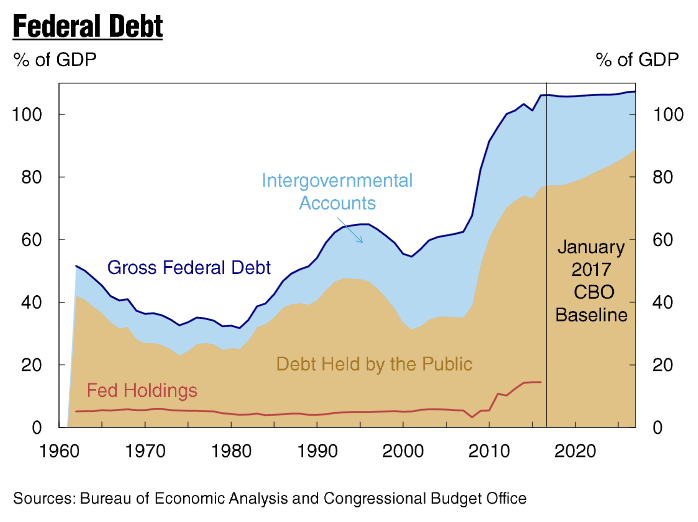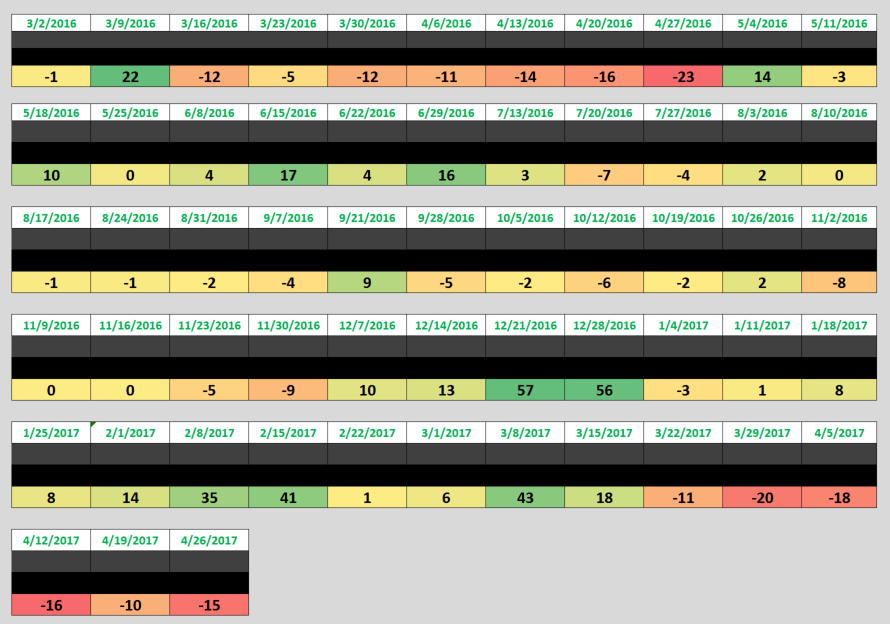SHI Update 4/26/17: Spend More!

SHI Update 4/18/17: Floating in Debt
April 19, 2017
We Didn’t Spend Enough!
April 29, 2017 Spend more!
Spend more!
We must work together to grow our economy! Do your part! Spend LOTS!
As an ardent follower of the Steak House Index, you know consumer spending drives our economy. We’ve discussed this concept in length … and this principle is the foundation of our theory. As consumer spending is responsible for almost 3/4 of all economic growth, the spending habits of our fellow citizens is critical to the health of our economy.
But consumer spending is measured in the aggregate; in total. So I’ve got good news for you ‘savers’ out there: You really don’t have to spend more. Not you personally. But encourage your friends to spend more. Someone has to! 🙂
Welcome to this week’s Steak House Index update.
As always, if you need a refresher on the SHI, or its objective and methodology, I suggest you open and read the original BLOG: https://terryliebman.wordpress.com/2016/03/02/move-over-big-mac-index-here-comes-the-steak-house-index/)
Why You Should Care: The US economy and US dollar are the bedrock of the world’s economy. This has been true for decades…and notwithstanding plenty of predictions to the contrary, it will continue to play this role for years to come. Fear not.
Nominal global GDP is about $76 trillion. US GDP is almost $19 trillion. Is it growing or shrinking? If it’s growing … how rapidly? How might this information impact our daily financial and business decisions?
The objective of the SHI is simple: To predict the GDP direction ahead of official economic releases. While the objective is simple, the task is not. BEA publishes GDP figures the instant they’re available. Unfortunately, the data is old, old news; it’s a lagging indicator.
‘Personal consumption expenditures,’ or PCE, is the single largest component of the GDP. In fact, the majority of all US GDP increases (or declines) usually result from (increases or decreases in) consumer spending. Thus, this is clearly an important metric to track.
I intend the SHI is to be predictive, anticipating where the economy is going – not where it’s been. Thereby giving us the ability to take action early. Not when it’s too late.
Taking action: Keep up with this weekly BLOG update. If the SHI index moves appreciably – either showing massive improvement or significant declines – indicating expanding economic strength or a potential recession, we’ll discuss possible actions at that time.
The BLOG: Apparently President Trump agrees. He would like you to spend more, too. In fact, he’s counting on it.
I’m sure by now you’ve heard about the Trump administration “Tax Reform Plan.” It’s being heavily covered on-line, in the media and in the press. So I won’t talk extensively about the proposal, but will focus on possible federal debt and GDP impacts.
Make no mistake: This is a major change. The administration expects the tax cut will usher in significantly higher GDP growth, which, in their estimation, will expand taxable income against which a lower rate will be paid. Making the change – at worst – ‘revenue neutral’ to the US Treasury. The administration assures us the tax cuts will not increase our federal debt level.
I’m not yet convinced. And I’m a bit worried, given our current federal debt load:

This chart, courtesy of the New York FED, looks pretty frightening. Because it is. Here is the quote that accompanied the chart:
Federal debt held by the public as a share of GDP has increased sharply since the Great Recession (2008), rising from 35% in (fiscal year) 2007 to 77% in (fiscal year) 2016.
Never before in peace-time (I suspect one could argue we’re not in peace-time given the terrorist threat) has US debt ballooned as much as it has in the recent past. Why am I showing you this chart while speaking about the administrations proposed tax modification? What implication does a tax cut have on our federal debt level?
If such a plan were implemented, and US GDP did NOT grow significantly faster each year this plan is in effect, our annual deficit and federal debt level may increase. Significantly.
Look, Steve Mnunchin and Gary Cohn are smart guys. They know that the current tax system doesn’t work.
They also know that 2015 IRS preliminary data (returns US citizens filed for 2016), suggests an average effective federal income tax rate of about 13.5% per return. And this is based on ‘adjusted gross income,’ so the average effective federal tax rate – as a percentage of gross income – is quite a bit lower than 13.5%. Surprising, right?
So a 15% tax rate (for corporations and ‘pass thru’ entities) which eliminates most deductions, may actually keep collections fairly close to this figure. I suspect they’ve done the math. Which is probably how they came up with new individual tax brackets of 10, 25 and 35%. It’s entirely possible their plan, as designed, is revenue neutral. I’m just doubtful.
Consider this: Look at the image below. Note “Individual Income Taxes” equaled about $1.55 trillion last year. If we divide this amount by 13.5, we learn a 1% decline in tax collections will cost the US Treasury $114 billion. Thus if collections fell to an average effective tax rate of 12.5% – a 1% decline – the Treasury would need to make up that amount to be ‘revenue neutral.’ Which they can do if GDP growth accelerates, thereby increasing the tax base.
But GDP growth would need to accelerate from it’s current 2% +/- range by more than 3% – to over 5% per year – to make up this difference. (The math: an $18 trillion GDP multiplied by a 3.5% GDP growth rate, then multiplied by an average historic 18% collection rate.) I think this is extremely unlikely.

As you can see above, the majority of tax revenue is from individual income taxes. Corporate income taxes (CIT) were only about 10% of total receipts. Now, it’s entirely possible a 15% tax rate could significantly increase CIT collections. We might make up a short-fall here.
But much is unknown. This tax cut proposal is a bold experiment. At a time when the federal debt is already, in my opinion, too high.
Phew. Are you ready for a trip to the steak house? What is this week’s SHI telling us about GDP growth?
More of the same. Once again, this week’s SHI reading of negative (-15) is close to the reading one year ago:

The SHI is suggesting consumer spending remains, in the aggregate, fairly consistent, predicting a slightly sub-2% GDP growth figure.
And only two days from now we’ll see how accurate a barometer the SHI has been – the ‘preliminary’ GDP figure for Q1, 2017 will be released by the BEA.
Here’s our longer term SHI trend:

I’ll conclude with these comments:
We live with a 2% GDP growth economy. Plus or minus.
Even if tax cuts stimulate individual and corporate investment, I feel current demographic conditions have effectively put a lid on potential GDP growth rates. Over time, with increased business automation, GDP growth can accelerate. Over time. And perhaps tax cuts are the catalyst we need. I simply remain unconvinced.
On the other hand … if you SPEND more, all our problems would be solved! 🙂
- Terry Liebman




4 Comments
You are so interesting! I do not believe I have read through anything like this
before. So nice to discover someone with original
thoughts on this issue. Seriously.. thank you for starting this up.
This site is something that is required on the internet,
someone with a little originality!
I’m so happy to read this. This is the kind of manual that needs to be given and not the accidental misinformation that is at the other blogs. Appreciate your sharing this best doc.
Hello There. I discovered your weblog using msn. This is an extremely smartly written article.
I’ll be sure to bookmark it and come back to read extra of your helpful information. Thanks for the post.
I will certainly comeback.
I have been exploring for a little bit for any high-quality articles or blog posts in this sort of house .
Exploring in Yahoo I eventually stumbled upon this site.
Studying this information So i’m happy to show that I’ve an incredibly good uncanny feeling I found out exactly what I needed.
I most certainly will make sure to don?t disregard this website and provides it a glance
on a constant basis.